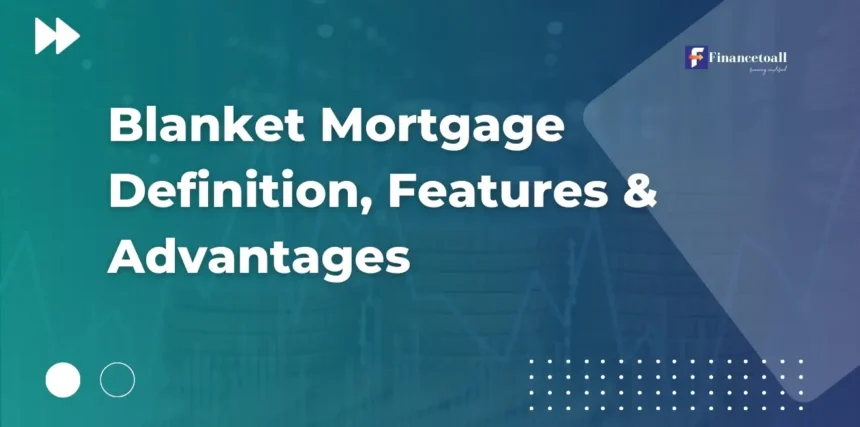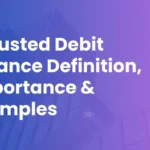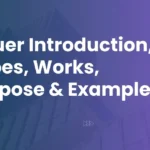A blanket mortgage is a single loan that covers multiple properties under one agreement. Real estate investors and developers commonly use it to simplify financing and reduce costs. One key feature is the partial release clause, which allows individual properties to be sold without paying off the entire loan.
Key Takeaways
- Definition: A blanket mortgage is a single loan used to finance multiple properties under one agreement.
- Purpose: Primarily utilized by real estate developers, investors, and businesses to simplify financing.
- Features: Includes a release clause, making it flexible for selling individual properties while keeping the loan intact.
- Advantages: Streamlines property acquisition, offers cost savings, and provides flexibility.
- Risks: Higher financial risk due to cross-collateralization; if one property defaults, all properties under the blanket mortgage are at risk.
What is a Blanket Mortgage?
A blanket mortgage is a single loan that covers two or more pieces of real estate. Instead of having separate mortgages for each property, this type of loan allows you to combine them under one umbrella. This is why it’s called a “blanket” mortgage as it Combine multiple properties with one loan.
Example:
Imagine you’re a real estate investor who owns three rental properties. Instead of managing three separate loans, you can use a blanket mortgage to combine all three properties under one loan agreement.
How Does a Blanket Mortgage Work?
- Loan Application: You apply for a loan to finance multiple properties.
- Collateral: All the properties under the blanket mortgage act as collateral for the loan. This means if you can’t repay the loan, the lender can take control of the properties.
- Partial Release Clause: One unique feature of blanket mortgages is the partial release clause. This allows you to sell individual properties covered by the loan without paying off the entire loan. Instead, you pay back a portion of the loan that corresponds to the value of the property sold.
- Loan Management: You make a single monthly payment, covering all properties included in the loan.
Who Uses Blanket Mortgages?
Blanket mortgages aren’t for everyone. They’re most commonly used by:
- Real Estate Investors: Managing multiple rental properties or flipping homes.
- Developers: Financing multiple plots of land or large real estate projects.
- Businesses: Consolidating office locations or commercial properties under one loan.
Key Features of a Blanket Mortgage
- Cross-Collateralization: All properties act as collateral, spreading the lender’s risk.
- Partial Release Clause: Flexibility to sell properties without paying off the entire loan.
- Streamlined Payments: One loan means one payment, simplifying finances.
- Scalable Financing: Useful for expanding real estate portfolios.
Benefits of a Blanket Mortgage
Let’s talk about the advantages of using a blanket mortgage:
1. Simplified Loan Management
With one loan covering multiple properties, you’ll have less paperwork and fewer lenders to deal with. This is a major time-saver, especially if you’re managing a large portfolio.
Example:
If you own six rental properties, you won’t have to juggle six different payments. Instead, you can manage everything through one loan.
2. Cost Savings
Blanket mortgages can help you save on closing costs, origination fees, and administrative expenses. Since you’re bundling properties under one loan, the overall costs are usually lower.
3. Flexibility to Sell Properties
The partial release clause is a game-changer. It lets you sell one property while keeping the others under the loan. This is particularly helpful for real estate developers or investors who need liquidity.
Example:
A developer builds ten houses in a subdivision. With a blanket mortgage, they can sell one house at a time, use the proceeds to pay down part of the loan, and continue developing the rest.
4. Supports Expansion
Blanket mortgages are ideal for investors and developers looking to expand their portfolios. You can acquire new properties without needing separate loans for each one.
Drawbacks of a Blanket Mortgage
No financial tool is perfect. Blanket mortgages also have some downsides:
1. Higher Risk
Since all properties act as collateral, defaulting on the loan could mean losing multiple properties, not just one.
Example:
If you’re unable to make your payments, the lender can seize all the properties under the mortgage, even if only one is underperforming.
2. Complex Terms
Blanket mortgages often come with detailed terms, such as the partial release clause. Negotiating these terms can be tricky, especially if you’re new to real estate.
3. Larger Down Payment
Lenders often require a significant down payment or equity, which might be a barrier for smaller investors.
4. Limited Availability
Not all lenders offer blanket mortgages. Finding one that does may take some research and negotiation.
What Happens If You Default on a Blanket Mortgage?
If you default on a blanket mortgage, the lender can seize all properties under the loan due to cross-collateralization. This is why it’s essential to assess your financial stability before committing to this type of loan.
Blanket Mortgage vs. Traditional Mortgage
Here’s a quick comparison to help you understand the differences:
| Feature | Blanket Mortgage | Traditional Mortgage |
|---|---|---|
| Coverage | Multiple properties | Single property |
| Administrative Burden | Lower (one loan) | Higher (separate loans) |
| Risk | Higher (cross-collateralized) | Lower (individual risk) |
| Flexibility | Partial release clause | No partial release |
When Should You Consider a Blanket Mortgage?
You might benefit from a blanket mortgage if:
- You’re Expanding Your Portfolio: Investors looking to buy multiple properties will find this loan structure helpful.
- You’re Developing Real Estate: Developers working on subdivisions or commercial projects often use blanket mortgages.
- You Want to Consolidate Loans: If you have several mortgages, a blanket loan can simplify payments and potentially reduce costs.
Real-World Example of a Blanket Mortgage
Scenario:
Sarah is a real estate investor with five rental properties worth $2 million. She needs $1.5 million in financing to refinance the properties. Instead of applying for five separate loans, she secures a blanket mortgage for $1.5 million.
Later, Sarah decides to sell one of her properties worth $400,000. Thanks to the partial release clause, she sells the property, pays back $300,000 of the loan, and continues managing the remaining properties under the same loan.
How to Qualify for a Blanket Mortgage
Here’s what lenders typically look for:
- Good Credit Score: A strong credit history is essential.
- Sufficient Equity: Lenders often require a high loan-to-value ratio (LTV).
- Stable Income: You’ll need to show reliable cash flow or rental income.
- Experience: Many lenders prefer borrowers with experience in real estate investing or development.
Tips for Negotiating a Blanket Mortgage
- Focus on the Partial Release Clause: Make sure the terms allow you to sell properties without unreasonable restrictions.
- Shop Around for Lenders: Not all lenders offer blanket mortgages, so compare terms and rates from multiple sources.
- Understand the Risks: Cross-collateralization can be risky. Ensure you have a solid repayment plan.
- Work with a Real Estate Attorney: A lawyer can help you navigate the complexities of the loan agreement.
Conclusion
Blanket mortgages are a powerful tool for real estate investors, developers, and businesses managing multiple properties. They simplify loan management, save on costs, and offer flexibility with the partial release clause.
FAQs About Blanket Mortgages
1. What is a blanket mortgage?
A blanket mortgage is a single loan that covers multiple properties. It’s commonly used by real estate investors, developers, and businesses to simplify financing and reduce administrative costs.
2. How does a blanket mortgage work?
A blanket mortgage allows you to combine multiple properties under one loan. All properties act as collateral, and a unique feature called the partial release clause lets you sell individual properties without paying off the entire loan.
3. Who is eligible for a blanket mortgage?
Blanket mortgages are typically available to:
.Real estate investors managing multiple properties.
.Developers working on projects with several plots or units.
.Businesses owning or acquiring multiple commercial properties.
4. What is a partial release clause?
The partial release clause is a key feature of blanket mortgages. It allows you to sell one property covered by the mortgage, repay a portion of the loan, and keep the other properties under the same loan.
Example: If you sell a property worth $300,000, you can pay a portion of the mortgage balance while retaining ownership of the other properties.
5. What are the benefits of a blanket mortgage?
Some major benefits include:
Simplified loan management with one payment for multiple properties.
Cost savings on closing costs and origination fees.
Flexibility to sell individual properties without repaying the entire loan.
Scalability for expanding real estate portfolios.
6. What are the risks of a blanket mortgage?
The main risks include:
Cross-collateralization: If you default, the lender can seize all properties under the loan.
Higher initial equity or down payment requirements.
Complex terms that may require careful negotiation.
Limited lender availability, as not all lenders offer blanket mortgages.
7. Can homeowners use a blanket mortgage?
Blanket mortgages are more commonly used by investors and developers. However, homeowners purchasing or refinancing multiple properties (e.g., vacation homes or rental units) may qualify in some cases.
8. How is a blanket mortgage different from a traditional mortgage?
A traditional mortgage covers a single property, while a blanket mortgage covers multiple properties. With a blanket mortgage, you benefit from a single loan payment, partial release clauses, and streamlined administration.
9. Are blanket mortgages available for rental properties?
Yes! Real estate investors often use blanket mortgages to manage financing for multiple rental properties.
10. What happens if I default on a blanket mortgage?
If you default, the lender can foreclose on all the properties covered by the loan. This is one of the biggest risks of cross-collateralization, so it’s crucial to have a repayment plan in place.
11. How much equity is required for a blanket mortgage?
Most lenders require significant equity or a large down payment. The exact amount depends on the lender and the loan-to-value ratio (LTV) of the properties involved.
12. What are the interest rates for blanket mortgages?
Interest rates vary based on the lender, your credit score, and the risk profile of the properties. Blanket mortgages may have slightly higher rates than traditional mortgages due to their complexity.
13. Can I refinance with a blanket mortgage?
Yes, you can use a blanket mortgage to refinance multiple properties. This is particularly useful for consolidating loans or accessing equity across your portfolio.
14. Are blanket mortgages tax-deductible?
In many cases, the interest on a blanket mortgage is tax-deductible if the properties are used for investment or business purposes. Consult a tax advisor to understand the specific implications for your situation.








